During the first week of July I spent one entire day searching for high alpine beetle species above the tree line at Fuente Dé, in the Picos de Europa. The day was memorable for me in a sense that I even found more then what I was looking for, and my goals were already ambitious: finding a very restricted high mountain Carabus species, as well as an endemic Longhorn Beetle and moreover I was hoping to catch a glimpse of the elusive Wallcreeper. I knew all of this wasn’t very realistic in one day, but how I was wrong! Severe persistence to keep on turning rocks till late afternoon was necessary to finally bump into the much wanted ground beetle. This quest will probably have shortened severely my time living with a healthy back, but damn, the reward felt good!
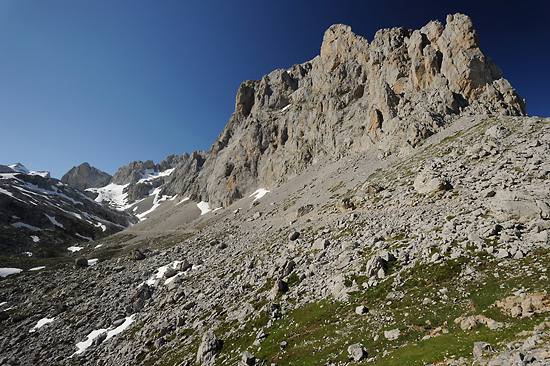
But let’s start with the beginning of the day. Fuente Dé is the end of a road in the southern Part of the Picos de Europa, and the starting point of an ascent of almost 900 metres in altitude along an nearly vertical slope, which is covered by a spectacular cablecar. Once arrived above, the trip starts at an altitude of 1850 meters above sea-level. The Picos de Europa is a National Park, which holds the highest peaks of the Cantabrian Mountain Range, lying in the North West of Spain (Basque Country).
Under here the steep slopes seen from Fuente Dé.

Once arrived above, I was welcomed by the pleasant calls of Alpine Choughs, often flying by at close distances while keeping their eyes upon the tourists who might spoil some food. Less obtrusive but often as confident when keeping quiet, were the lovely Alpine Accentors.
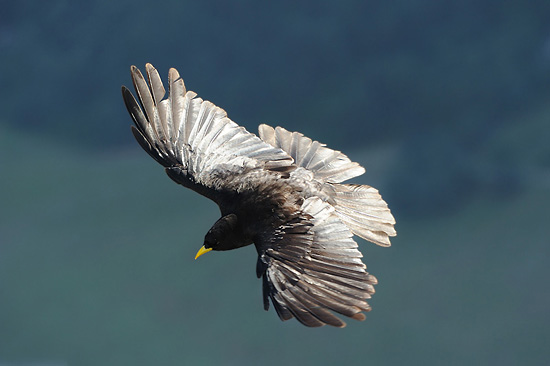
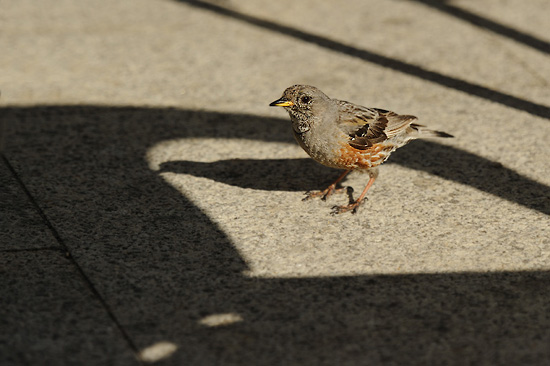
Under the first stones and rocks I looked under, I found some Wall Lizards and Midwife Toad males, carrying eggs on their back. After a few tens of minutes I came across a Dorcadion heydeni, walking slowly on a rock. ‘Dorcadions’ are ground and grass dwelling Longhorn beetles, with a good indicator value for natural and semi natural steppe vegetations. The family is well represented in the Mediterranean and Pannonian steppes of Europe. Spain holds an impressive number of endemic Dorcadion species and Dorcadion heydeni is an endemic of high altitude open and short grasslands of the Cantabrian Cordillera. My first target within the first half an hour, not a bad start of the day! And all of this with a superb view on rugged peaks of more than 2500 metres... Under here two images of Dorcadion heydeni.
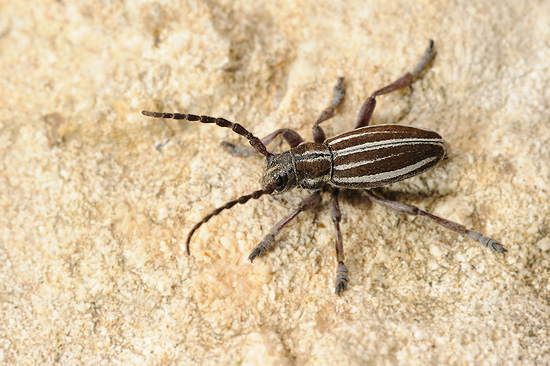
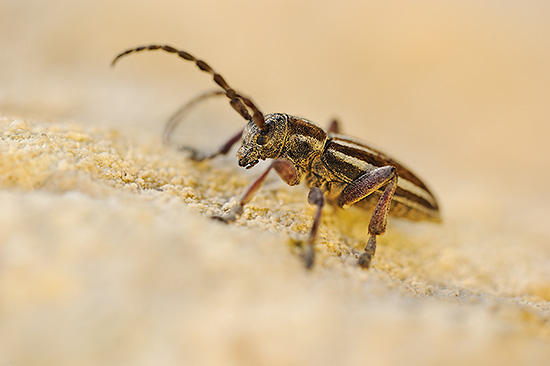
But time to move on, and start to look in suitable habitat for Carabus auriculatus, my main target species of the day. The species is a highly restricted range endemic occurring only in The Picos de Europa and the adjacent peaks Peña Ubiña and Peña de Orniz, at an altitude between 1800 metres and 2400 metres. What’s more, even up there, its habitat is highly specific: they only occur in the alpine meadows, with short vegetation and a lot of rocks, by preference in a humid and cold place. They are known to be found in the close vicinity of the remaining snow patches. The details of the life cycle of the species still remain poorly known. Recent findings suggest that within suitable habitat the species might be not so uncommon as previously thought, but researchers think that the adults have only a very short activity period. Once the temperatures get too hot during the day, they become inactive again and hide deeper in the ground. It is meanwhile certain that the outcome of adults shifts through the season to the higher altitudes. So, when searching in June, one might only find individuals along the snow patches at 1800 metres. In July the active populations have usually shifted to much higher altitudes. During the hottest periods they dig deeper into the soil under rocks to hide during daytime and they become difficult to find without trapping. As the summer season started extremely late in 2013, I suspected the beetles could still be found at lower altitudes. On the other hand the hot days made their entry very abruptly this year and the sun was already beating mercilessly on my head. So to summarize, I would have to start my quest at the lower altitudes and hope I would find soon active beetles. If not, I would have to move on to higher altitudes till I found again suitable habitat and then start searching again.
For almost an hour I looked under stones and rocks, from tiny ones to very heavy ones, which I could barely lift up. But, all in vain...
I decided to look on a shaded steep northern slope with some higher vegetation and scrubs, for eventual other species. I soon came across several specimens of Carabus macrocephalus, also a new species for me. Most of the individuals had coppery-bronze colours, but some individuals were brighter green (see the image down at the bottom).

I decided to move on again and climb till a next snow patch. Around the second large patch of snow I found again some Carabus macrocephalus specimens, but I also discovered a beautiful Carabus lineatus under a large rock, again a new species for me! Very nice, but this was an early species, which I didn’t expect to find. As the Carabus auriculatus was still active, I started to fear that the auriculatus population had barely come out yet, due to the very low temperatures the previous weeks... On the other hand, this was an exceptional high altitude for ‘lineatus’, so maybe it is not unusual that at this altitude the species can still active in july.
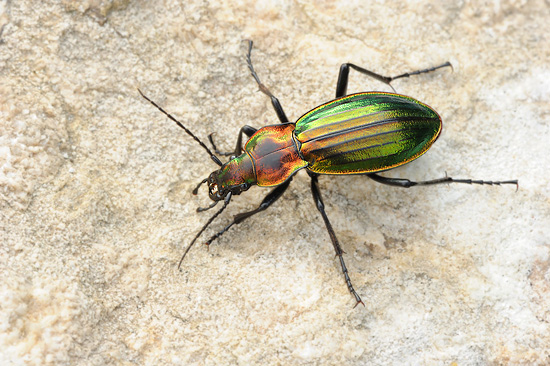
I decided to climb a few hundred metres more in altitude and try to find again suitable habitat. Unfortunately I didn’t see any snow patches higher up, the slopes were now south – exposed and all the snow seemed to have melted. Then the path crossed a very large screeslope, close to an incredibly impressive mountain wall, in other words: the perfect Wallcreeper habitat and good ‘auriculatus habitat’. But no luck under the stones, not even one beetle species... This area was definitely already getting too hot for carabini, and following the climbing path didn’t seem to bring me soon to cooler areas. I decided to walk back, and try a lower, more north - exposed slope, when I heard a distant song of a Wallcreeper. After playing back its song, a bird immediately flew in and landed on a rock at close distance. I got superb views, but when I wanted to take my camera, the bird flew off and didn’t come back. Obviously, the day was plenty of surprises and a nice sighting of a much sought after mountain bird even made it better.
Before turning off to a lower northern slope, I gave my quest a short break and ate a little. To my surprise three Alpine Choughs landed very close and seemed to beg for food. I took a few pictures with a wide angle, and then I decided to screen a new screeslope very close to large snow patch.
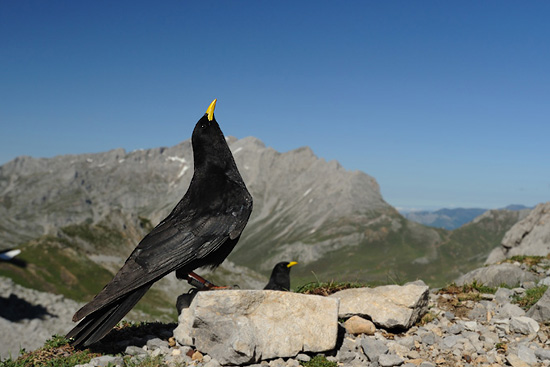
After fifteen minutes searching under the rocks I found a beautiful female Carabus auriculatus. Finally after having lifted several hundreds, if not a thousand of rocks for hours, I got my reward. What a beetle! The species is maybe not a very large Ground Beetle and it hasn’t got the most flashy colours neither, but I love the massive head with short powerful jaws, which are used to crush the shells of Pyrenaearia snails, their main prey. The very flat body and the massive head, which is typical for the ‘Iniopachys’ group of Carabini, together with the subtle greenish and purplish fringes, make it one of my favourite mountain Carabids of Europe.
Under here the Carabus auriculatus female.
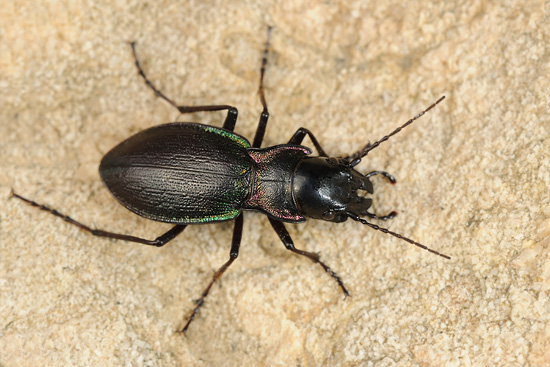
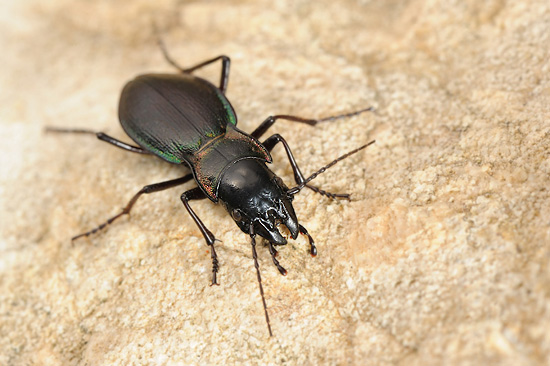
Under here an image of a beautiful male Carabus macrocephalus with the peak ‘Peña Olvidada’ on the background.
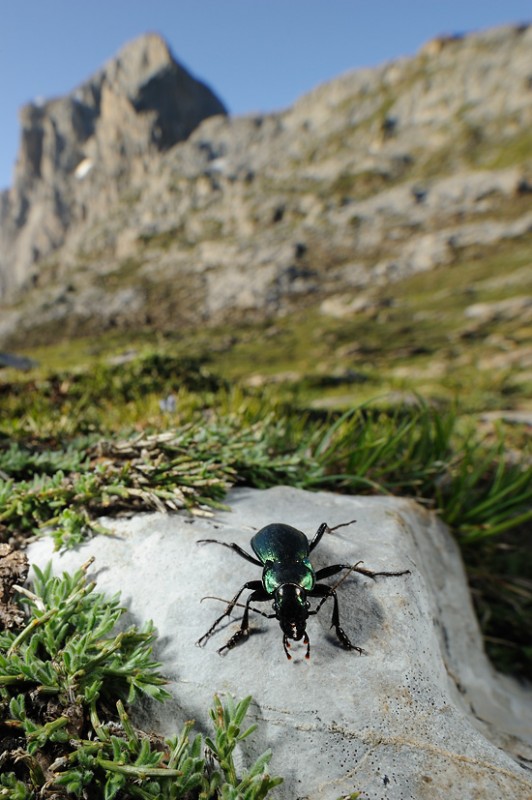
If you are interested in seeing more images from the Picos de Europa, please have a look here.
